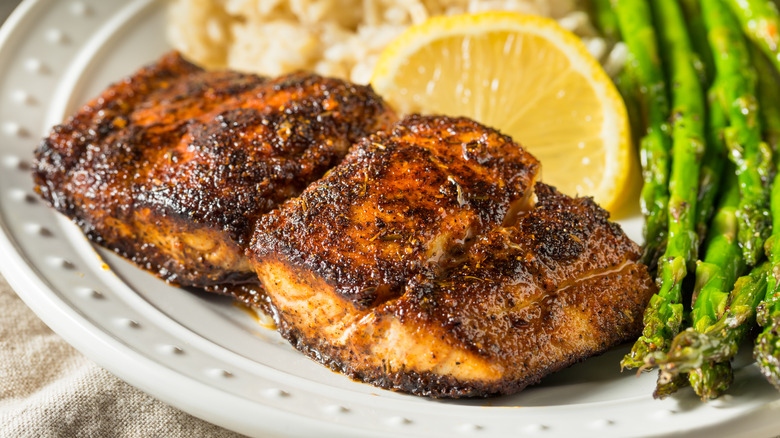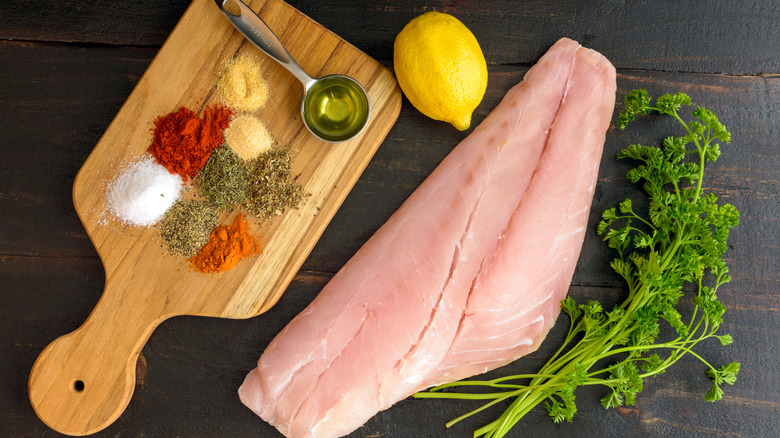Where The Bold Flavors Of Blackened Fish Actually Come From
Those who order seafood at a restaurant are inevitably asked if they want their salmon, mahi mahi or other fish blackened. While the end result is full of bold, delicious flavors, they are mostly anonymous. So, for those who hope to try and recreate this method at home, where do the bold flavors come from?
The blackened crust comes from a mix of the right spices, cooked in butter for a short amount of time on a hot skillet on high heat. The milk solids from the butter, combined with the seasoning, is what makes for that dynamic flavor. This blackening method originated in Cajun cuisine, but it has become widespread over time. These days, you may see the preparation method show up in chain restaurants (like Rubio's blackened menu items), or Mexican and other types of food. So, which seasonings are needed to make blackened fish at home?
The blackening method requires several different spices
Since blackened fish typically has such a spicy kick to it, some of its ingredients might be easy to guess. There's paprika and cayenne pepper, two spices that have a good amount of heat to them and can just about always be found in blackening recipes — they're essential. Also likely to be found are cumin, black pepper, garlic powder, or onion powder — either some combination of these, along with paprika and cayenne pepper, or possibly all of them in total. Most of the time there's also one or two herbs in the recipe, such as oregano, thyme or basil.
A home chef can get pretty creative with their choice of seasonings; if every single spice in a recipe isn't around, either leave it out or replace it. Looking around at various blackening recipes, they all differ by one or two ingredients, so it's a combination of repetition and wiggle room.
Once all the ingredients are in hand, mix them in a bowl so they're evenly distributed. From there, brush the fish with either oil or butter, then add that seasoning on top before it goes onto the stove top (with the seasoning side down). Don't forget: The stove needs to be at high heat in order to effectively capture that delicious, eye-popping blackened effect.

